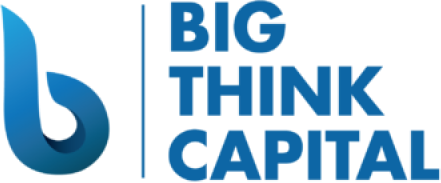Navigating the Aftermath of the Fed Rate Decision: Factor Rate vs. Interest Rate in Small Business Lending
Estimated reading time: 7 minutes
- Understanding the differences between factor rates and interest rates is crucial for small business owners.
- Reevaluating funding strategies in light of the Federal Reserve’s rate changes can lead to better financial decisions.
- Consider alternative financing options when traditional loans become less accessible.
Table of contents
- An Overview of the Federal Reserve’s Impact on Small Business Lending
- Factor Rates vs. Interest Rates: What is the Difference?
- Why Understanding Both Rates Matters for Small Business Owners
- Impact of Recent Federal Reserve Rate Decisions on Small Business Financing
- Practical Takeaways for Business Owners
- Conclusion
- FAQ
An Overview of the Federal Reserve’s Impact on Small Business Lending
The Federal Reserve plays a pivotal role in regulating the U.S. economy by influencing interest rates through its monetary policy. Changes to the benchmark interest rate affect lending costs across various financial products, including small business loans. Recent increases in the Fed rate aim to combat inflation and stabilize the economy, but they also pose challenges for business owners in securing affordable financing.
The current interest rate environment calls for a reevaluation of funding strategies. Many small business owners are turning to alternative lending options to meet their financial needs and adapt to rising costs resulting from the Fed’s decisions. Understanding the nuances of financing products is essential for making informed choices.
Factor Rates vs. Interest Rates: What is the Difference?
When exploring financing options, business owners frequently encounter two common terms: factor rates and interest rates. While they both relate to the cost of borrowing, they operate in distinct ways.
Interest Rates
An interest rate is a percentage of the principal amount that a lender charges as the cost of borrowing money. It is expressed as an annual percentage rate (APR), which allows borrowers to understand how much they will pay in interest over the life of the loan. There are two main types of interest rates:
- Fixed Interest Rates: These rates remain constant throughout the loan term, making repayment predictable.
- Variable Interest Rates: These rates can fluctuate based on market conditions, leading to varying monthly payments.
Business owners must carefully assess interest rates when considering loans, as they directly impact overall borrowing costs.
Factor Rates
Factor rates are commonly used in alternative lending products, such as merchant cash advances. Unlike interest rates, factor rates are expressed as a multiplier that is applied to the amount borrowed. For example, if a business takes out a cash advance of $10,000 at a factor rate of 1.3, the total repayment amount will be $13,000. The repayment is typically structured as a daily or weekly deduction from the business’s sales.
Factor rates are easier for some business owners to understand but can lead to confusion when calculating the true cost of borrowing. It is crucial to comprehend both the factor rate and the duration of the repayment period to obtain a complete picture of the financial obligation.
Why Understanding Both Rates Matters for Small Business Owners
With the recent Fed rate hikes and their impact on borrowing costs, understanding the differences between factor rates and interest rates has become more critical than ever. Here are three reasons why business owners should pay close attention to these rates:
- Cost of Capital: The cost of financing directly impacts a business’s cash flow and operating margins. Understanding how factor rates and interest rates are calculated will enable business owners to choose the most cost-effective solutions for their needs.
- Predictability: Knowing whether they are dealing with fixed or variable rates can help business owners anticipate their future financial commitments. This is essential for budgeting and financial planning.
- Financing Options: Many businesses will be affected differently based on their unique financial situations. Being well-informed allows business owners to explore a broader range of financing options, including traditional bank loans and alternative lending products like cash advances and lines of credit.
Impact of Recent Federal Reserve Rate Decisions on Small Business Financing
The Federal Reserve’s recent decisions to raise interest rates have ripple effects throughout the economy, especially for small businesses. These changes can lead to higher costs for businesses relying on traditional loans, while making alternative financing options—including those that utilize factor rates—more appealing.
Effects on Traditional Loans
Higher interest rates typically result in increased borrowing costs for traditional loans, which can deter small businesses from applying. A study from the National Federation of Independent Business found that rising interest rates represent one of the primary concerns for small business owners, as they can lead to tightened budgets and reduced cash flow.
- Increased Loan Payments: Business owners may face significantly higher monthly payments if they secure a loan during a period of elevated interest rates.
- Eligibility Challenges: Stricter lending criteria could mean more small businesses are turned away from traditional banks.
The Appeal of Alternative Financing
In light of recent Fed decisions, many business owners are turning to alternative financing options, where factor rates often come into play. These products offer speed and flexibility—advantages that are especially valuable during uncertain economic times.
- Merchant Cash Advances: These allow businesses to convert future sales into immediate cash. While the factor rate may seem higher, the speed and accessibility can make this an appealing choice for businesses that need funds quickly.
- Equipment Financing: This allows businesses to acquire new equipment without high upfront costs. The rates can be competitive, and the equipment itself often serves as collateral, minimizing risk for lenders.
- Working Capital Advances: These are especially useful for seasonal businesses that experience fluctuations in cash flow. It ensures businesses have sufficient funds to cover expenses during slow periods.
Practical Takeaways for Business Owners
As the small business financing landscape changes in 2025, it is crucial for owners to remain informed and strategic. Here are three practical takeaways to consider as you explore your funding options:
- Analyze Total Cost of Borrowing: Always look beyond the stated rate, whether it is a factor rate or interest rate. Assess the full repayment amount against your business profits to understand the total cost of borrowing and its implications for your cash flow.
- Consult a Funding Expert: Navigating the complexities of small business financing can be overwhelming. Speaking with a qualified funding expert can provide personalized insights based on your specific situation, helping you identify the best financing options available.
- Stay Agile: Given the evolving interest rate environment, be prepared to adapt your financing strategy. Short-term financing may be more suitable than long-term commitments, particularly in a fluctuating economic landscape. Keeping options open ensures that your business can quickly pivot as economic conditions change.
Conclusion
Understanding the distinction between factor rates and interest rates is essential for small business owners navigating the aftermath of recent Federal Reserve decisions. As borrowing costs rise, awareness of financing options is paramount in selecting the most advantageous funding solutions.
At Big Think Capital, we specialize in helping small businesses secure the financing they need to thrive. Whether you’re considering a merchant cash advance or looking into equipment financing, our team of experts is here to guide you through the process.
If you are interested in learning more about your financing options or if you are ready to speak with a funding expert, visit us at bigthinkcapital.com today. Let us help you find the right funding solution tailored specifically for your business needs.
FAQ
What is the main difference between factor rates and interest rates?
Factor rates are multipliers applied to the amount borrowed, while interest rates are a percentage of the loan amount calculated annually.
How do recent Fed rate hikes affect small businesses?
They can lead to higher borrowing costs for traditional loans, prompting many businesses to consider alternative financing options.
What types of alternative financing are available for small businesses?
Options include merchant cash advances, equipment financing, and working capital advances.






